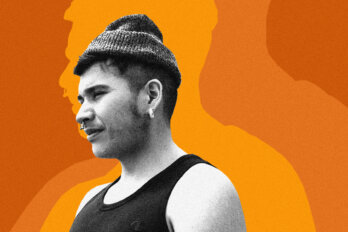The first time I ever had a real conversation with Kim Samuel, she was sixteen minutes late for our Zoom call. Her reason? A vulture who had taken to visiting her every day had just landed in her balcony in Costa Rica, and she didn’t want to disappoint it by failing to meet it. It was an impulse I could relate to. Given everything in the natural world humans have let down of late, who would want even a vulture to feel cast aside?
Community—between people, other species, and the planet—is something most of us think about only when it’s denied to us or taken away. And yet Samuel has been championing it since long before pandemic lockdowns left many of us reaching for connections. An activist and educator, she has lectured on the topic, devoted symposiums to it, and even built a think tank to help combat disconnection. This fall, she published a book called On Belonging: Finding Connection in an Age of Isolation.
In her book, Samuel details encounters with a range of global figures, from Nelson Mandela to King Charles (then Prince of Wales), she’s met through various humanitarian initiatives. I asked her how it is possible to be surrounded by so much life and yet feel all alone. “This is the paradox of our age,” she said. “We have every means to connect with virtually anyone we want to, when we want to. But technology is not a substitute for the day-to-day work of showing up and cultivating compassion.”
COVID-19 has made it hard to “show up” for one another in our usual ways. It’s hard to visit sick people in hospital, have water-cooler conversations with colleagues, or access even the kind-of-hated small talk at parties that served to bring life’s big stuff—work, relationships, family—down to human scale. All of this has been in the air this past fall, for even as remaining restrictions were lifted, pandemic numbers remained high. The elderly and the immunocompromised are still waiting for their community to return.
One positive outcome of the past few years might be a movement toward making cities and buildings safer from future pandemics. In “The Air We Share,” John Lorinc looks at how poor building design may be inadvertently spreading COVID-19 as well as other ailments. Concern with indoor air quality isn’t new; research into sick-building syndrome goes back decades. What is new, however, is the issue of indoor air quality as a frontier of human rights. A new high-rise project in Hamilton, Ontario, points to what happens when developers, architects, and engineers work together to create buildings that promote health and well-being.
Two other stories look at the way technology can both bridge divides and keep us apart. Many were surprised when, earlier this year, the Winnipeg police announced that they were starting a newsletter. In “Cops on Substack,” Julia-Simone Rutgers chronicles the motivations and experiences behind the force’s desire to “tell our story from a police perspective.” What emerges is a portrait of the crisis of trust in law enforcement but also surprisingly revelatory insights into how even the police feel ill understood. In “Lord of the Trolls,” Sakeina Syed details the way several diehard Lord of the Rings fans have created an online backlash against the integration of people of colour in the cast of The Rings of Power, the new Amazon series that adapts stories from Tolkien’s Middle-earth.
The Walrus community has always struck me as wide ranging and unusually fluid. Readers, writers, academic advisers, members of an affiliated organization, other supporters: whenever all of us do end up in the same room—say, at The Walrus Talks or another cultural event—it can be a bit hard to place who we’re talking to without asking. Some of those present evolve over time through a few different relationships with the organization.
Samuel spoke at The Walrus Talks in 2017 on the subject of belonging, published an article with us on #MeToo in 2018, and became a financial supporter later that same year. While our editorial and business decisions are kept separate, many people are drawn to The Walrus, I think, out of a desire to understand what other people find important. That’s partly why the organization feels like a community, even as that community crosses divides of generations and cultures, rich and poor, young and old, both on- and offline.
These past months have taught me that we don’t have to wait for the return of the “old ways” to stay in touch. Community can take the form of a friendly call, an old friend checking in with a text that says, “Send up a flare!”, or even an impromptu conversation with a friendly vulture. We hope the stories in this issue make you feel part of our wider world.





